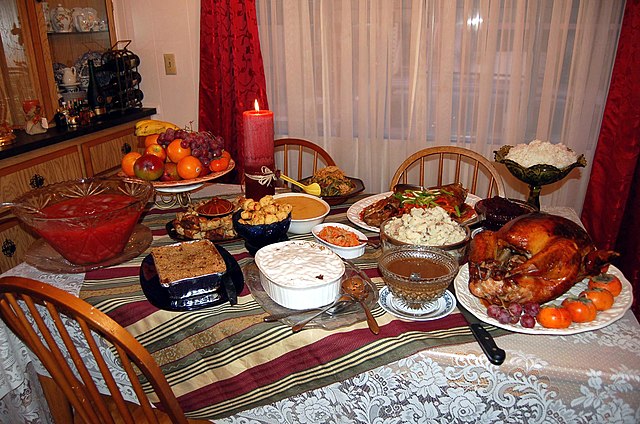As well as referring to the drink itself, tea has long been used as an umbrella term for several different meals consisting of food accompanied by tea. English writer Isabella Beeton, whose books on home economics were widely read in the 19th century, describes meals of various kinds and provides menus for the "old-fashioned tea", the "at-home tea", the "family tea", and the "high tea".
Afternoon tea with scones, jam, and little cakes at the Grand Hyatt Hong Kong
Thé avec des artistes ("Tea with the artists"), Jules Grün, 1929
Afternoon tea on a silver serving tower at a Hotel in Edinburgh
Finger sandwiches: cucumber, egg, cheese, curried chicken, with prawn canapés served during tea at the Savoy in London.
Dinner usually refers to what is in many Western cultures the biggest and most formal meal of the day. Historically, the largest meal used to be eaten around midday, and called dinner. Especially among the elite, it gradually migrated to later in the day over the 16th to 19th centuries. The word has different meanings depending on culture, and may mean a meal of any size eaten at any time of day. In particular, it is still sometimes used for a meal at noon or in the early afternoon on special occasions, such as a Christmas dinner. In hot climates, the main meal is more likely to be eaten in the evening, after the temperature has fallen.
A filet mignon dinner with mashed potato, string beans and mushrooms
Women in formal dress at dinner at Oxford Female Institute, Ohio, United States, date unknown
Casual dinner in western restaurant
Thanksgiving dinner








